The capital of Laos, with a population of around 800,000 people, is already a different world compared to the rest of the country. With a mix of French colonial houses and Buddhist temples, Vientiane offers all kinds of services, as well as some of the most important monuments.
The first time we were there, we didn’t have a pleasant memory (chapter of the travel diary: A walk through Vientiane), but the second time, while we were waiting for a visa, we decided to give it a chance and visit some of its temples, walk along the river, eat a lot of bread and drink a lot of wine. If you have to go there, you don’t need to stay more than a day.
Something we love, and that the cities of Southeast Asia bathed by the Mekong have in common, is the tranquility that can be felt when walking along its waters at sunset.
Usually, local people come to relax and enjoy these moments, and that is something we try not to miss when we visit any of these cities, and if it is with a beer in hand, even better.
In Vientiane, next to the river, there is a park from where you can observe the neighboring country, Thailand, just on the other side of the Mekong.
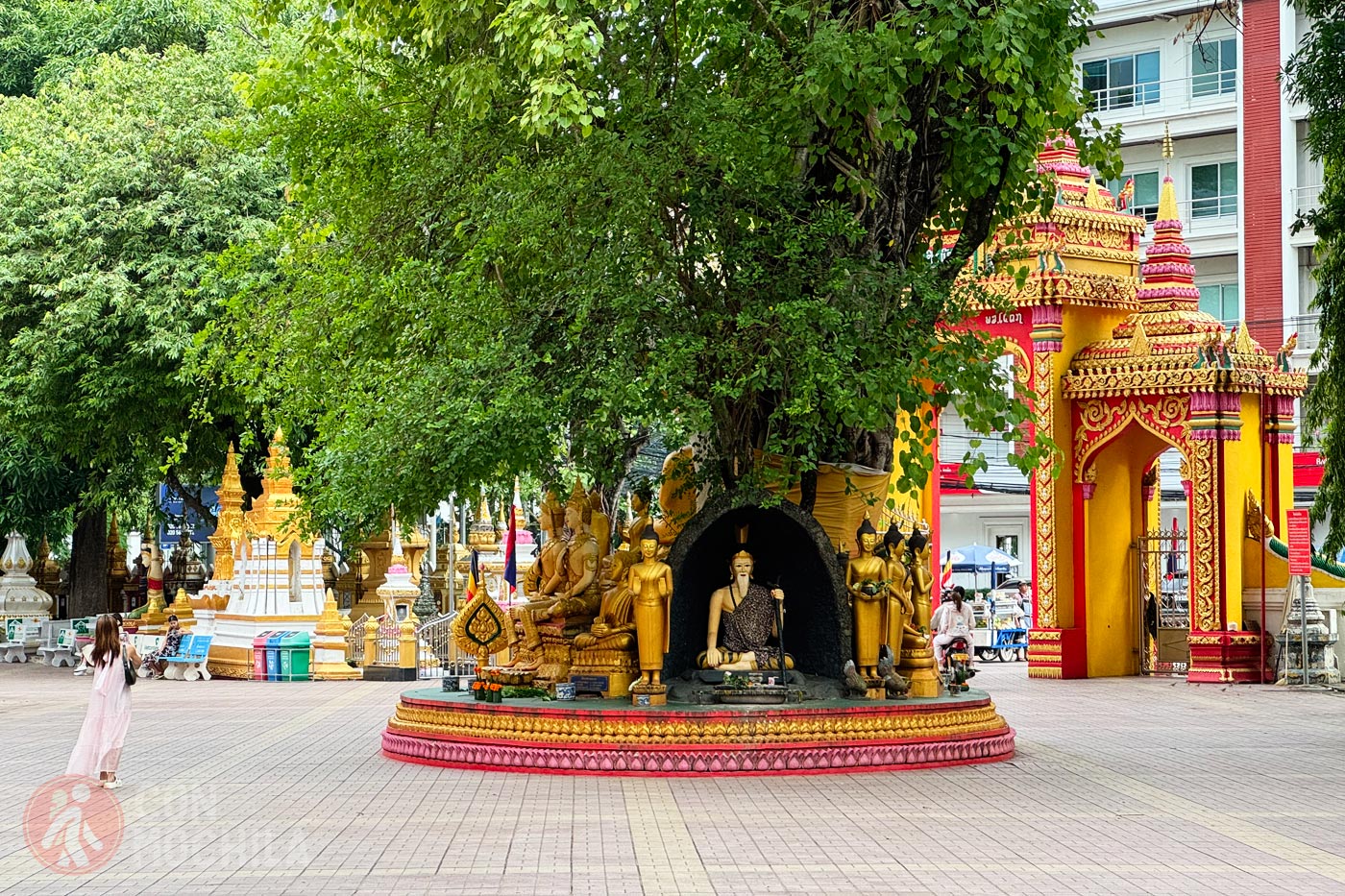
Vientiane, the capital of Laos, has a tropical monsoon climate characterized by warm temperatures throughout the year and a marked differentiation between the dry season and the rainy season. Here is a breakdown of the climate:
Dry season:
Rainy season:
The Laos visa is easy to obtain, without having to do it in advance at embassies or anything like that, as it is one of those called “on arrival”. You only need to have a valid passport, a few more requirements, and money ($35). We’ll tell you everything about Visa for Laos, and how to get it quickly.
It’s essential to travel to Laos with comprehensive insurance. We were among the first to offer the popular 5% IATI discount, and you can now get it with Heymondo Travel Insurance as well. You can find more information about both companies through the links provided above, or you can access the discount directly using the buttons below (in both cases, you’ll see the reduced final price on their website):
While many hotels, guesthouses, and restaurants in Laos offer free Wi-Fi, some travelers prefer or need a constant connection. We’ve included details on obtaining a eSIM Laos card with unlimited data. If you want to get one directly, use the following link (with a discount):
Vientiane’s Wattay International Airport is located just 4 km from the city and receives regular flights from Bangkok, Hanoi, Kuala Lumpur, Phnom Penh, Singapore, Seoul or Yunnan in China. There is a bus service from the airport to the city center. As Vientiane is close to the border, there is also the option of traveling to Udon Thani in Thailand and crossing the border by land.
We usually use Skyscanner to find cheap flights to Vientiane, so it might be worth checking it out to see if you get lucky.
By Bus from Another City in Laos, or from Cambodia, Vietnam or ThailandVientiane has several bus stations, including Southern Bus Terminal or Talat Sao Bus Terminal. These terminals have regular services to and from Vientiane, both domestically and internationally (Cambodia, Vietnam or Thailand).
Not too many years ago, the Mekong River bridge was opened for trains. From Bangkok, Thailand, you can reach Vientiane by night train and a connection with a local train that will cross the Friendship Bridge. If you do not have a visa, you can get off the train before the border and take a bus across to Vientiane. You can also take the train from Luang Prabang to Vientiane.
Our experience on the motorcycle route through Laos, passing through Vientiane:
Built between 1962 and 1968 in memory of those who died in the Laotian war of independence against France, Patuxai is a Laotian-style building with typical ornamentation and bas-reliefs on its walls. It is reminiscent of the Parisian Arc de Triomphe, but in this case, it has four arches instead of two.
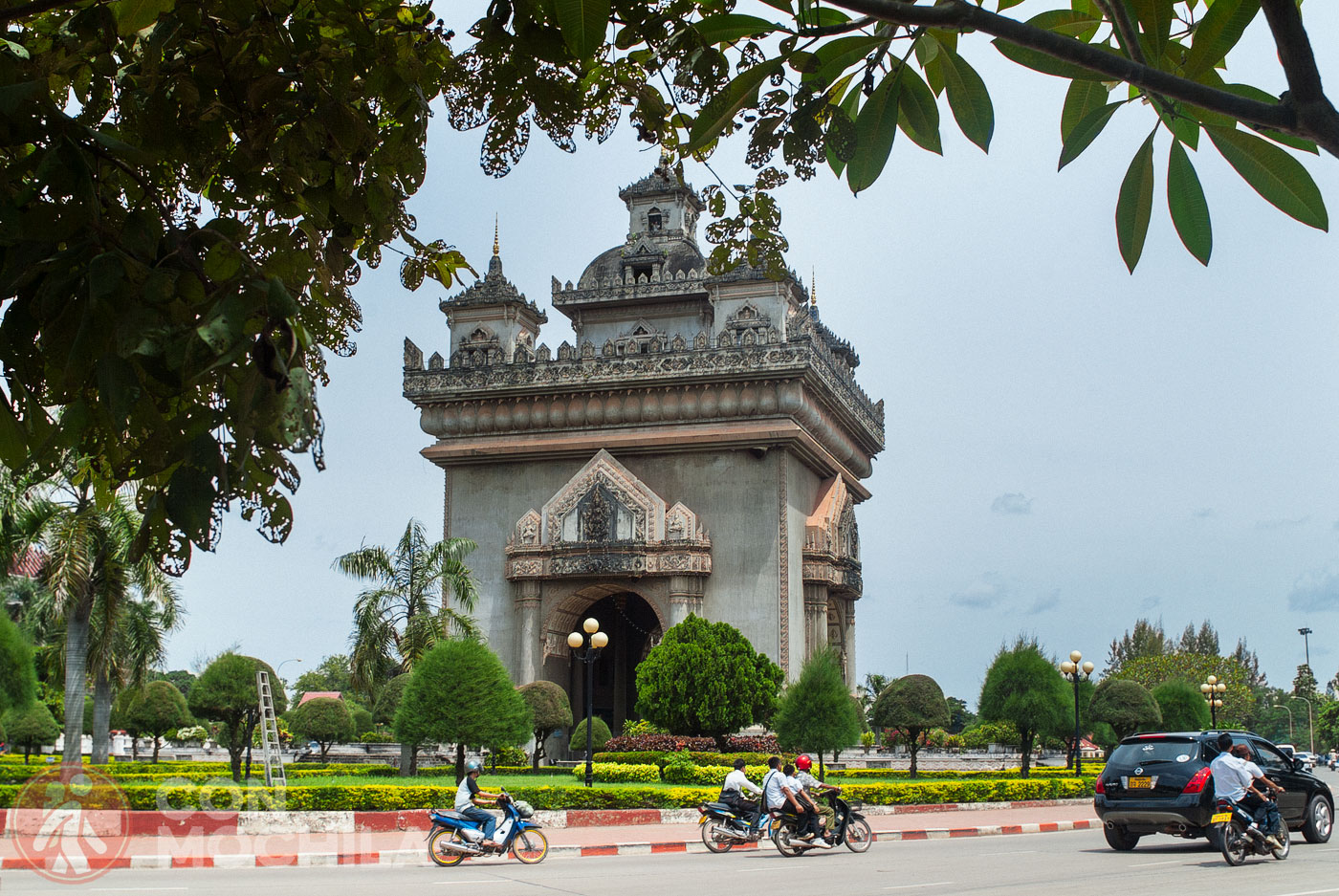
From the top, and avoiding the heat of the central hours of the day, you can enjoy a beautiful panoramic view of Vientiane, as well as see the gardens and ponds that surround it.
Pha That Luang, “the great stupa”, is the most important monument in Laos, a symbol of the Buddhist religion and of Lao national sovereignty. It was founded in the 3rd century as a Hindu temple and later, in the 13th century, as a Khmer temple. However, it has been rebuilt several times since then.
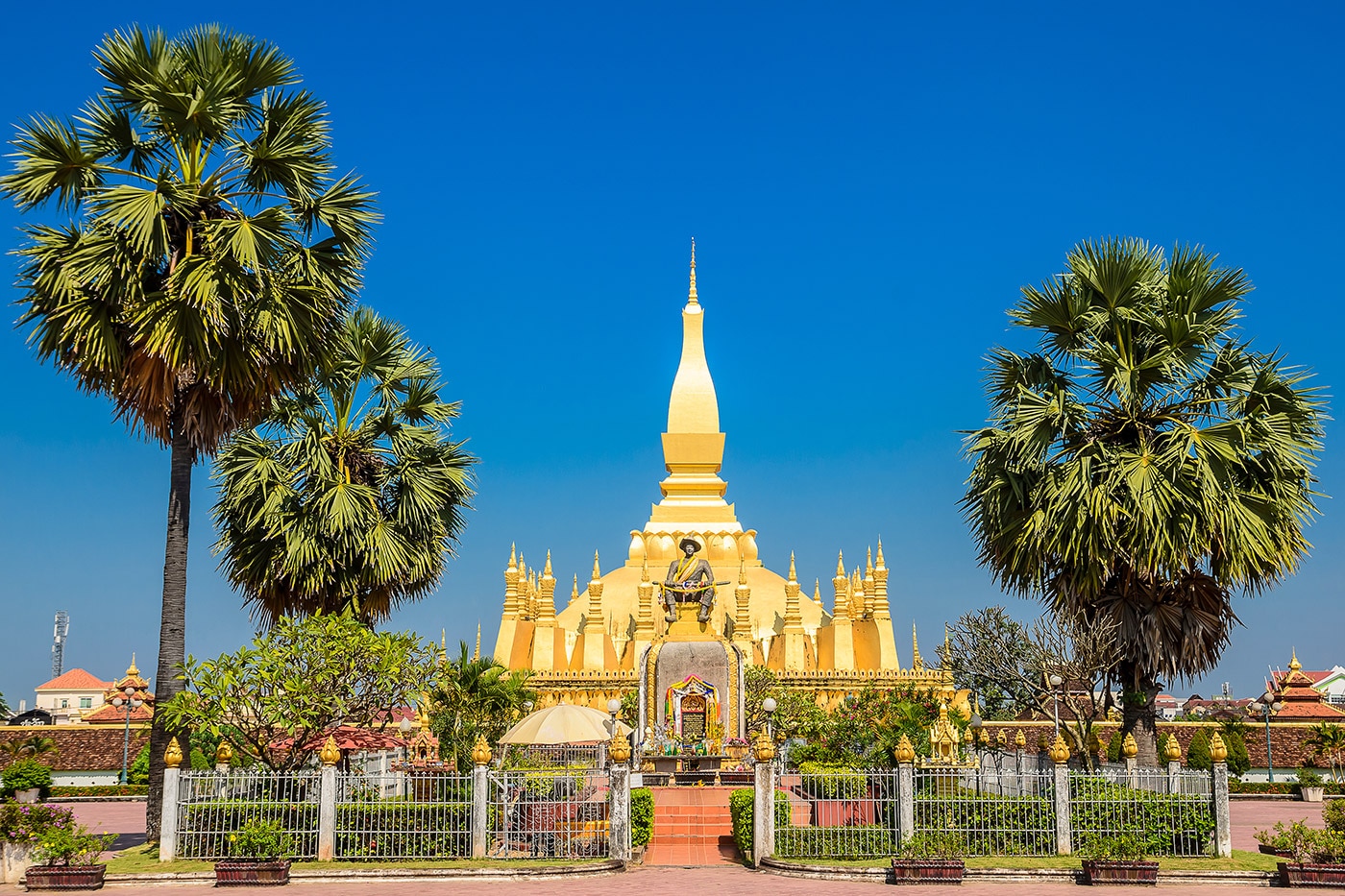
Each level of Pha That Luang has different architectural elements that summarize Buddhist architecture, with the material world being represented by its exterior part.
Restored in 1930, Wat Si Saket is a temple built in the early 19th century by the last king of Vientiane, Anouvong, and known for housing some 10,000 Buddha statues. It is said to be the only temple in the city that maintains its original construction as it survived the occupation of the Siamese army that burned the city in 1827.
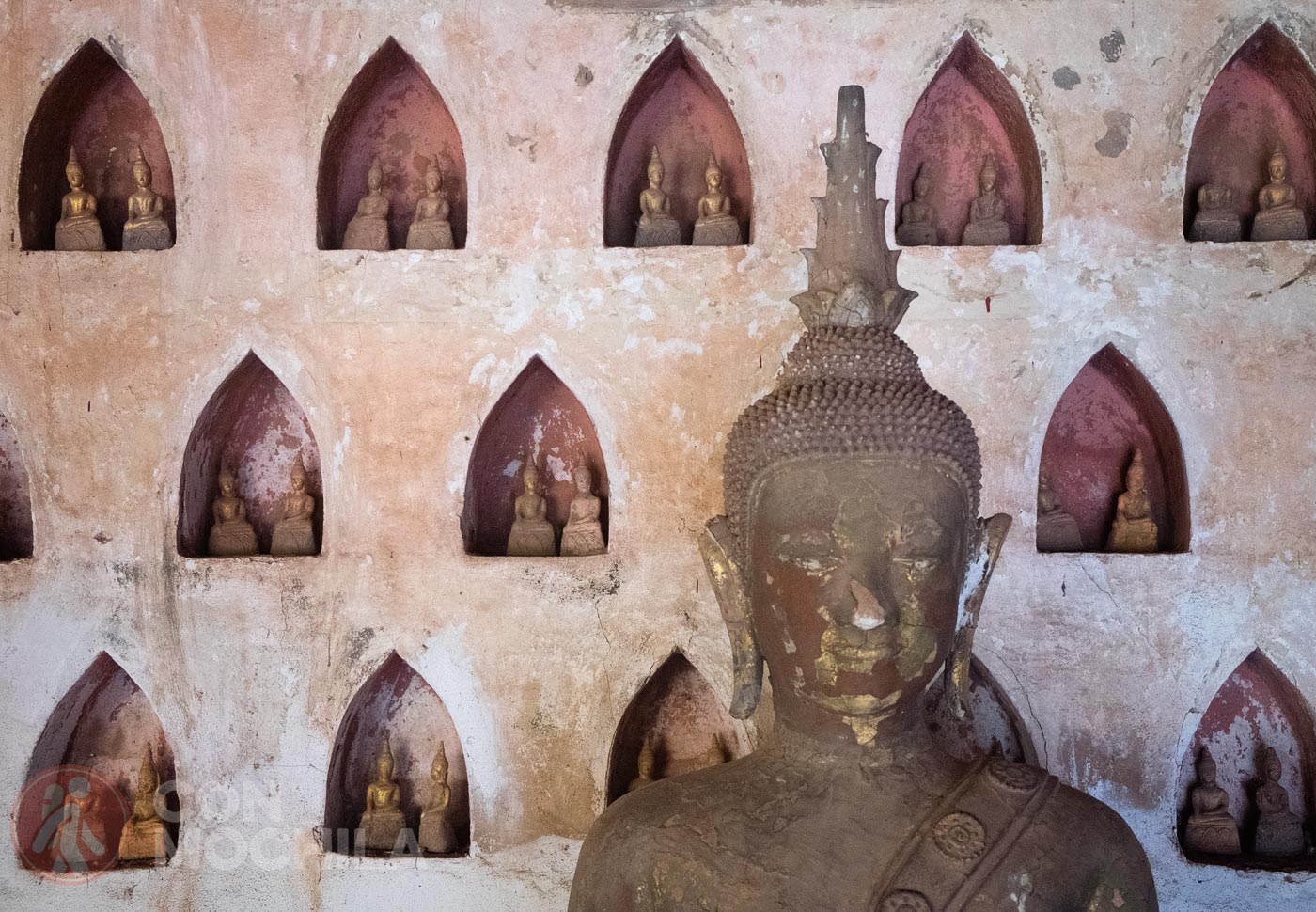
Its main building, the sim, draws attention because of its five-level roof decorated with images of Naga, deities of Buddhist culture, in the shape of a snake.
Just opposite to Wat Si Saket, we find the Haw Phra Kaew temple, one of the most venerated in Laos. It was built in 1565 as part of the royal enclosure to house the Emerald Buddha, venerated in this temple for more than 200 years and later moved to Thailand.
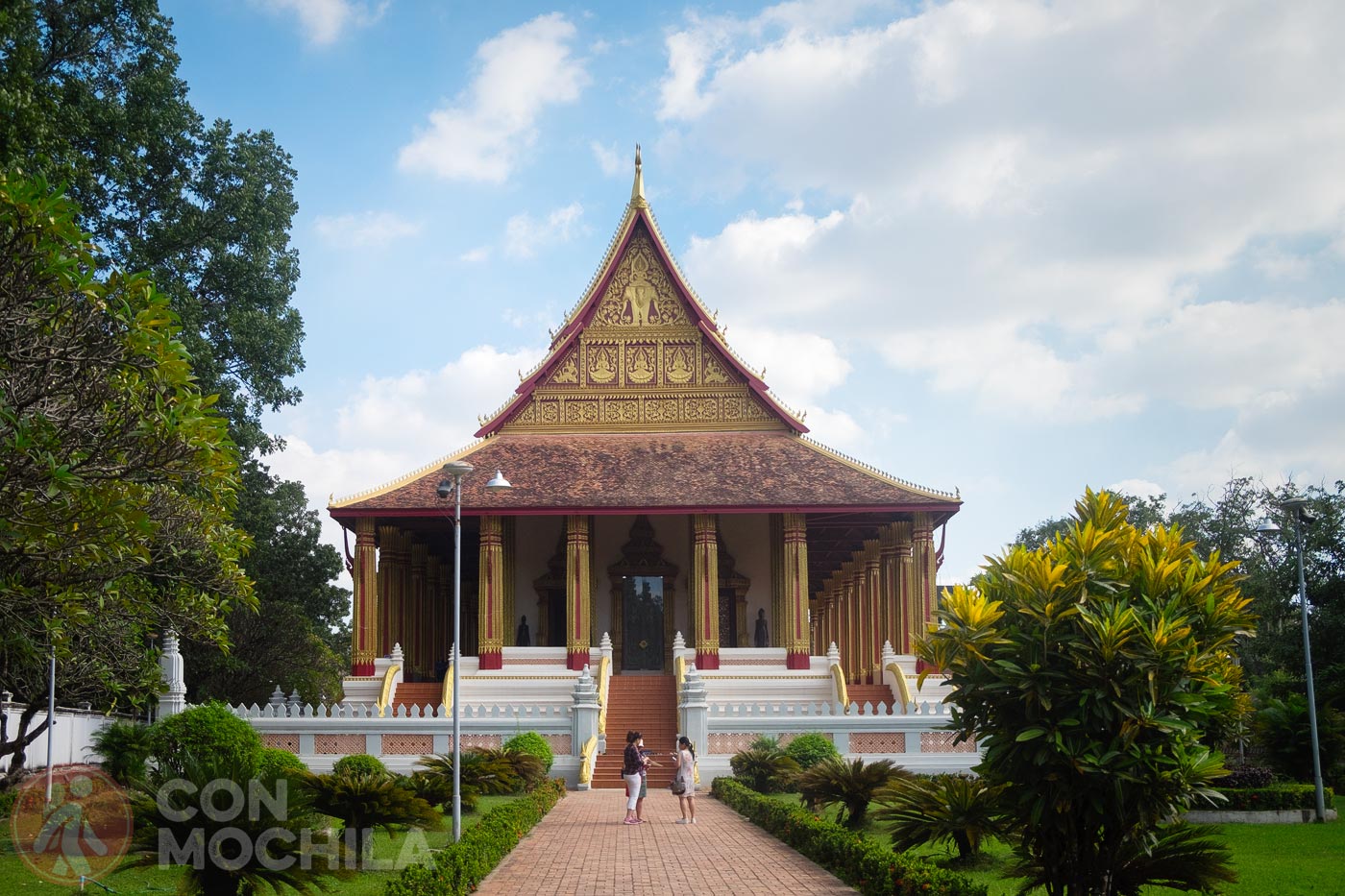
The temple we see today, with its multi-tiered roof and Naga images, was rebuilt in 1942 with the help of the French government, and it is a museum of religious art where Buddhist ceremonies are no longer held.
It is said that a pregnant young woman named Si Muang offered herself as a sacrifice to the guardian spirit of the city and jumped into the hole where a stone pillar, lak muang, was placed during the construction of this temple in Khmer times. Wat Si Muang is a Buddhist temple with two halls.
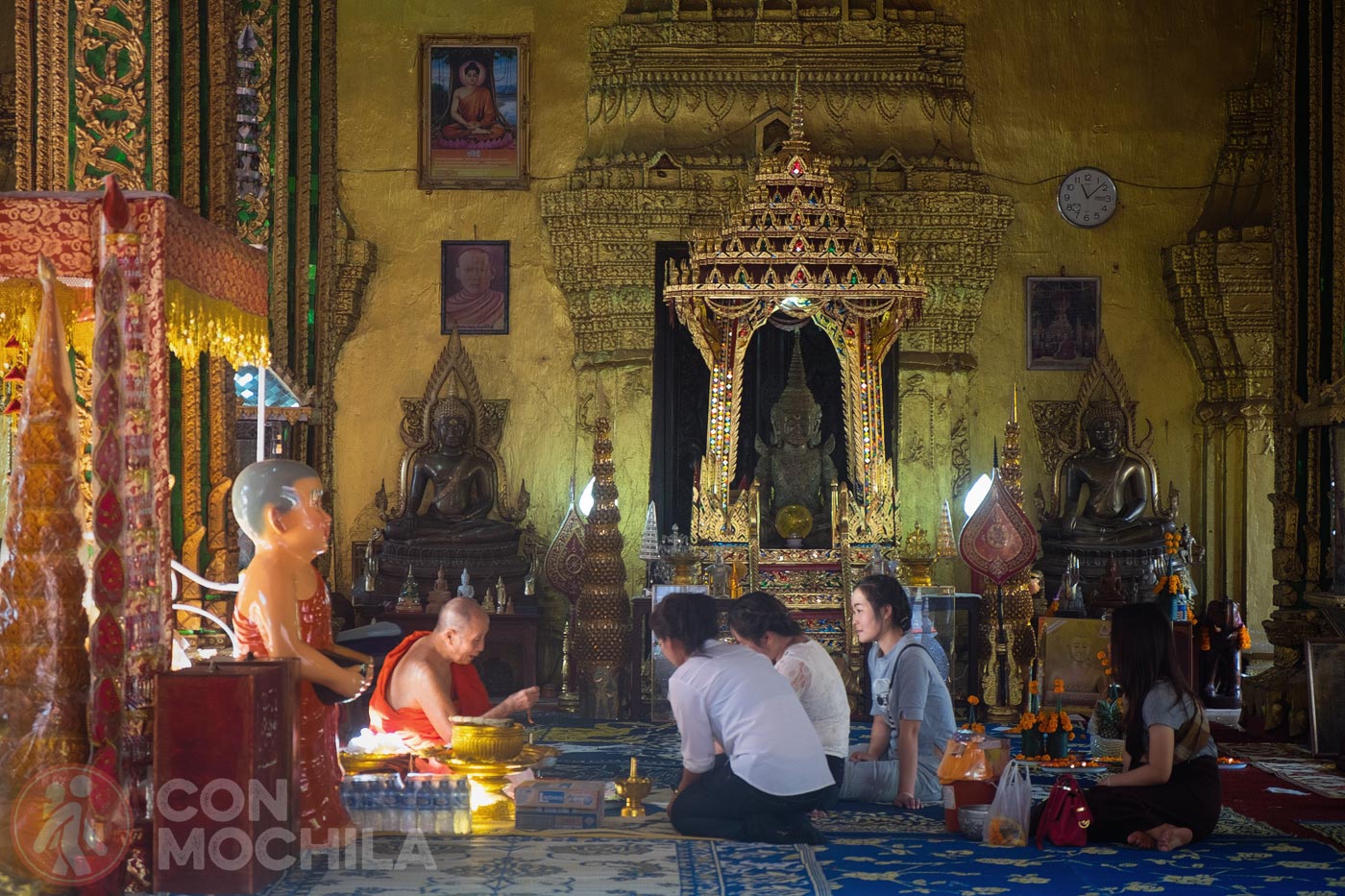
The largest of these rooms is where you can find a copy of the Emerald Buddha, to which, if you make a wish and it is granted, you must return with an offering, either food or money, and the second room, further back, is where the aforementioned pillar is wrapped in a sacred cloth.
At dusk, along the Mekong, all the vendors set up their stalls in a hurry to attract as many buyers as possible at the Vientiane night market. We will see many tourists buying clothes and souvenirs, trying to find the best price, but also local people who come to the river when the heat goes down to have a drink and rest.
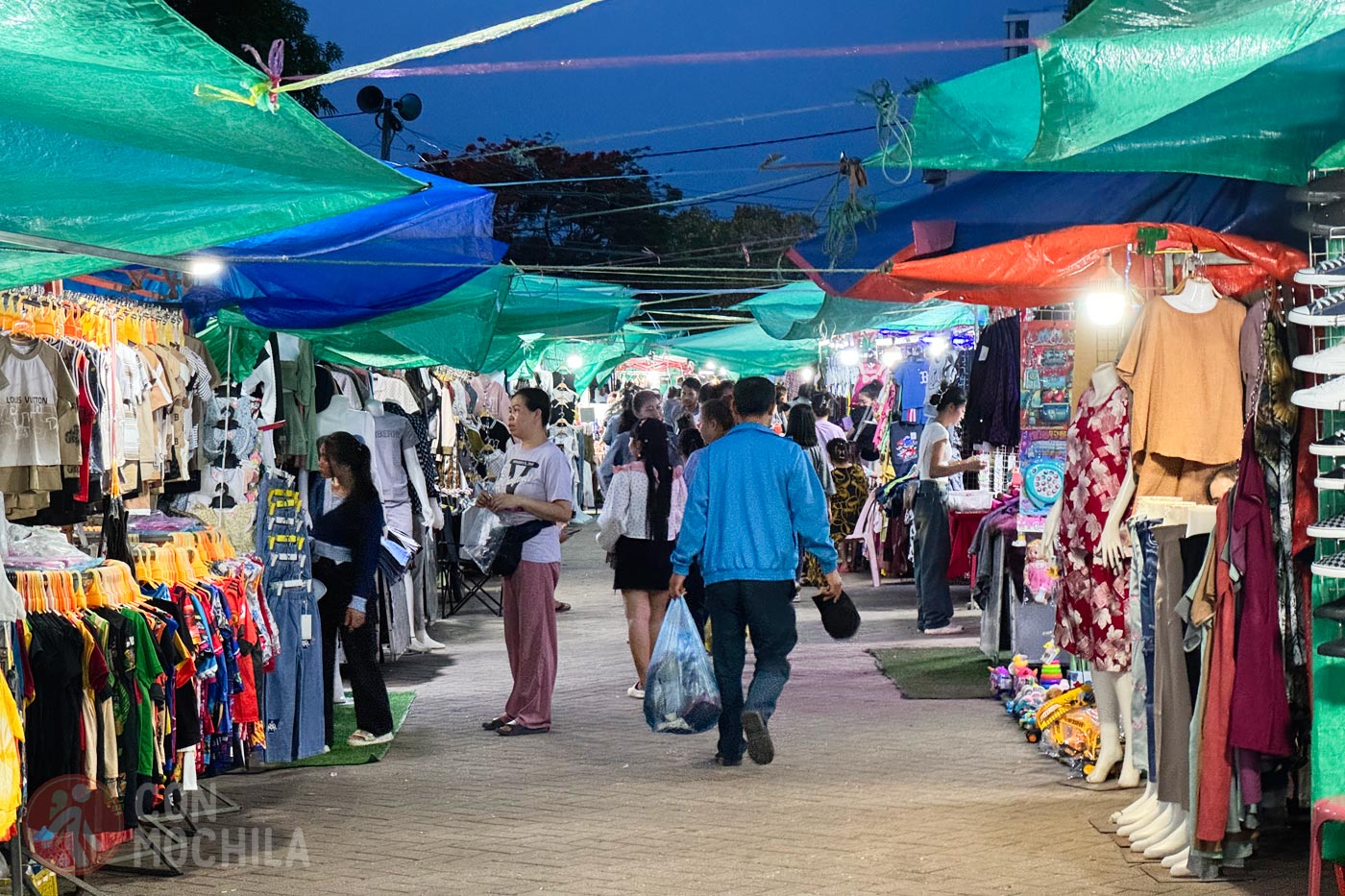
If, on the other hand, what we are looking for is to try the local cuisine, we should head to the Vientiane Farmers Market, a space full of local restaurants just below on the riverbank, or to the Ban Anou Night Market, a little further away.
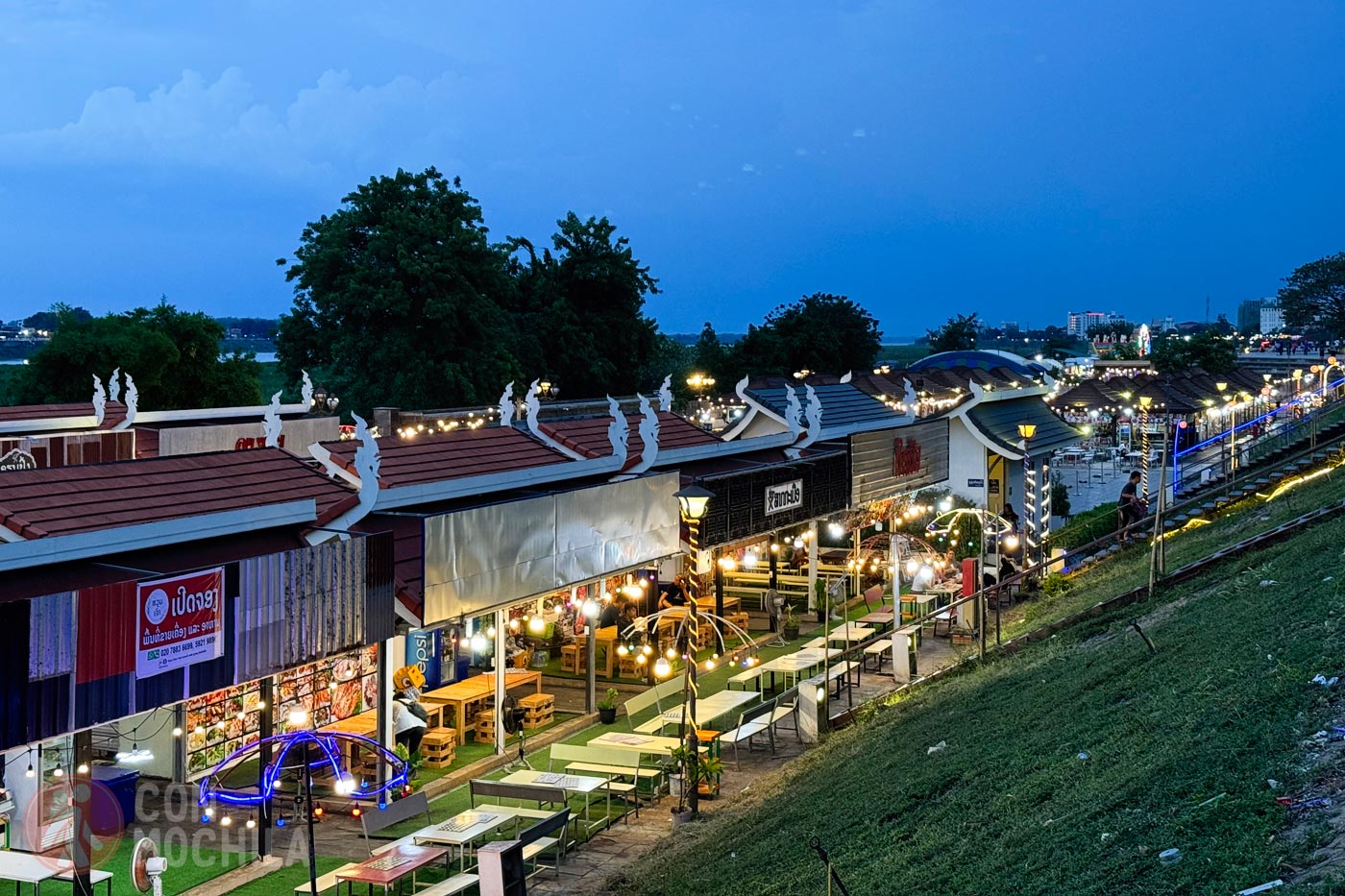
In both we will find everything, like fruit, fish soups, Laotian sweets, chicken skewers that are cooked instantly, as well as rice dishes, noodles, and much more.
It is surprising to see that the National Museum of Laos is falling apart. The building, dating from 1925, houses numerous collections in a somewhat disorganized manner. The objects found range from prehistoric times, like some dinosaur bones, to a few decades ago, when Laos fought for independence from France.
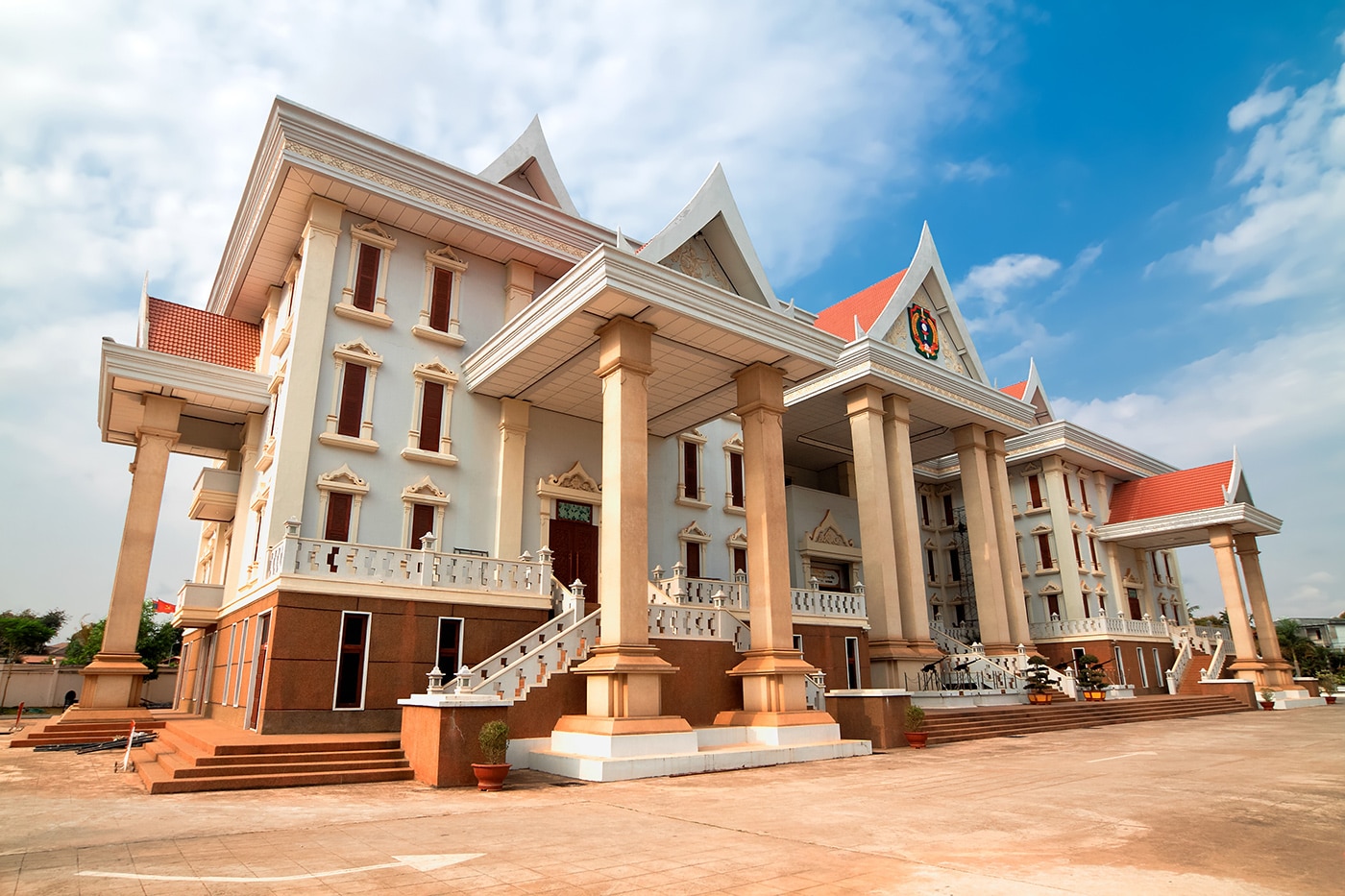
There we will learn that Laos was one of the most bombed countries in the world during the 1960s and 1970s. It seems that it is currently closed as a new building is being built in another location.
This traditional Buddhist festival in Laos and Thailand is celebrated every year with the arrival of the rainy season. Bun Bang Fai is a way of honoring the gods so that it will rain on the fields and they can grow crops. Originally, it had connotations of fertility rituals.
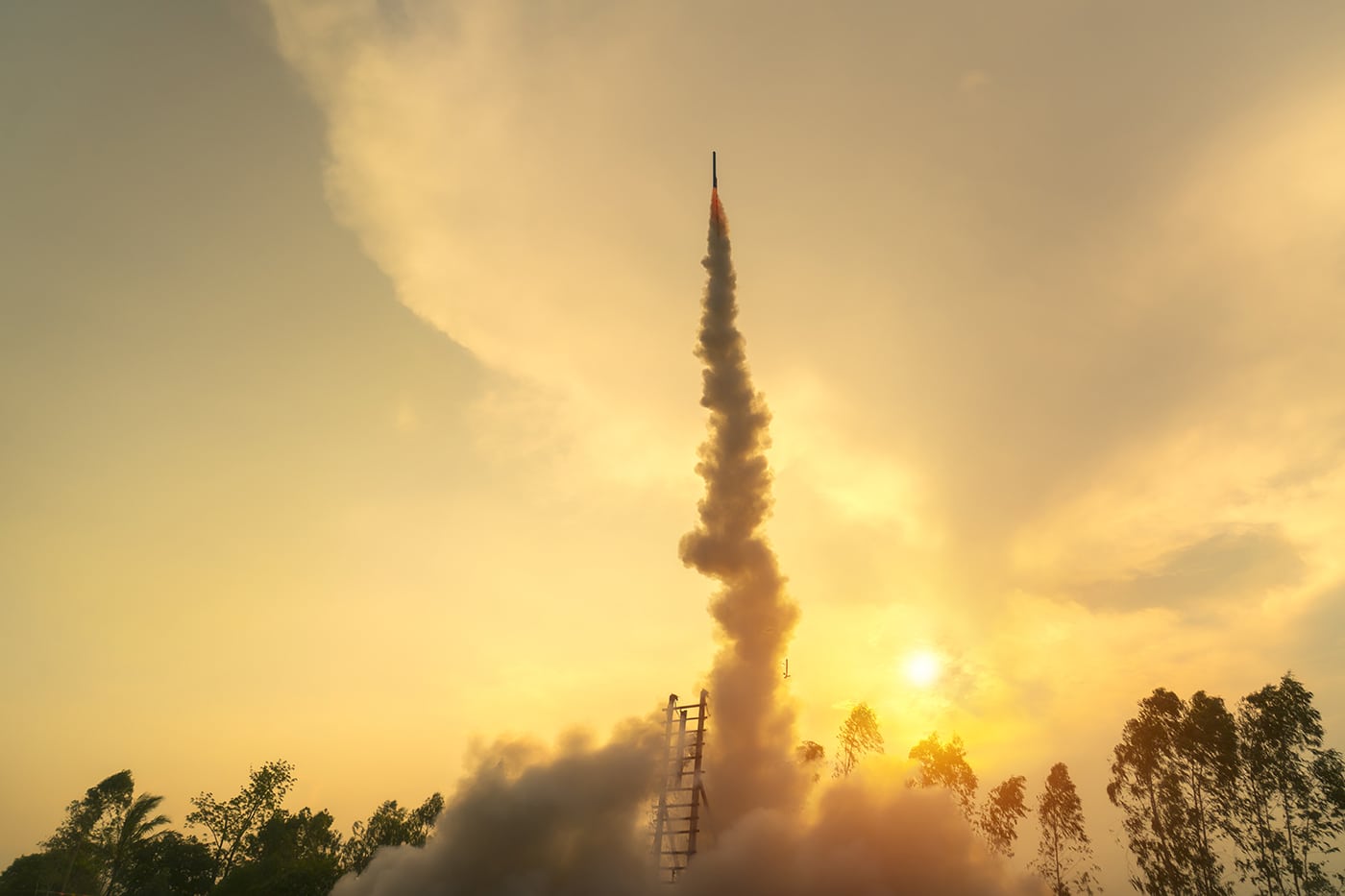
The festival has several celebrations such as parades and music in the streets, and, although in this case we are talking about Vientiane, it seems that in the villages people live it much more. The most striking thing about this festival is the preparation of homemade rockets or firecrackers that are launched into the sky on the last day of celebrations.
With this guided tour of Vientiane, choose between half-day or full-day, and you will discover temples such as Wat Si Saket, monuments such as Patuxai and the history of the capital of peaceful Laos, ending on the banks of the famous Mekong River.
Xieng Khuan or Buddha Park is a park with a strange collection of Buddhist figures, deities and monsters. It was built in 1958 by Luang Pu Bunleua Sulilat, a kind of shaman or mystic who fled the country to Thailand shortly before the 1975 revolution, where he built a similar park.
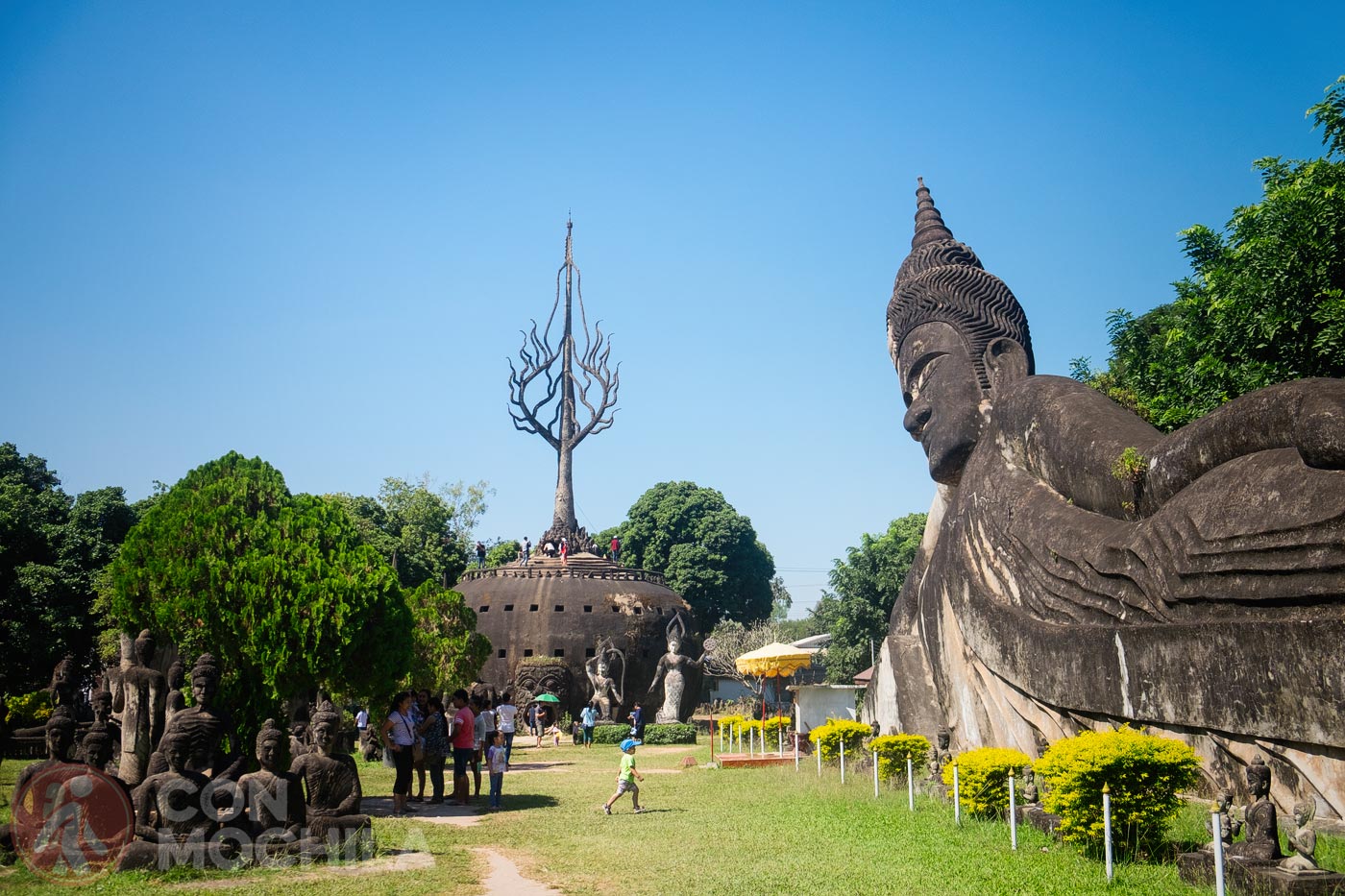
It is located about 25 km from Vientiane, very close to the border with Thailand, near the Friendship Bridge and next to the Mekong River. Today, it is a little abandoned, but it is worth visiting for the bizarreness of its figures. If you prefer, you can go on a full-day private guided tour of the Buddha Park, where you will learn more about the ins and outs of this place and which also includes a visit to Vientiane and its monuments.
The Nam Ngum River originates in a mountainous area in northern Laos and is one of the main tributaries of the Mekong River. Day trips can be made from Vientiane as Nam Ngum Lake is located about 80-90 km from the city.
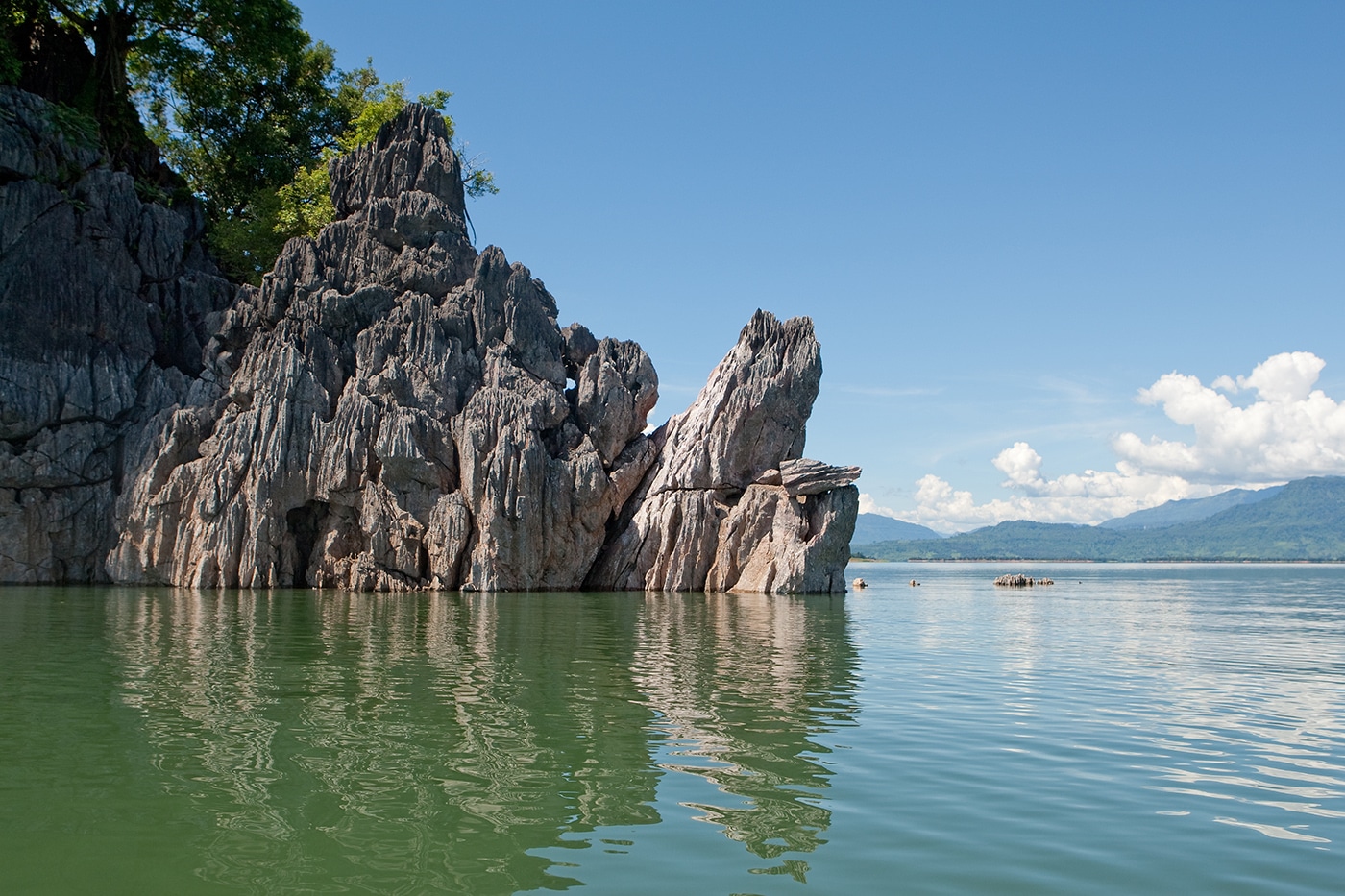
Along the way, you can visit an archaeological Buddhist area from the 11th century, as well as rent a boat that will take you to see some of the small fishing villages with wooden houses and the islands that belong to the nature reserve.
Backpackers Garden Hostel is a typical backpacker place to meet other travelers. We stayed there for a couple of nights when we arrived by motorcycle on our last trip through the country.
Seeing that our stay in the capital was going to be longer than we had thought due to the time we needed to get the Thai visa, and that we were also going with the cat, we decided to spend a little more and stay at the Villa Lao Hotel. A little more expensive, but very comfortable and pleasant.
You can also take a look at the recommendations we detail below:
Renting a bike to get around the city may be the best idea, since the streets of Vientiane are not made for pedestrians unless you only move around the center.
Another option is the scheduled buses that go to different temples or even to Buddha Park.
If you decide to take a tuk-tuk, they are considered public transport here, so don’t be surprised if the driver picks up more passengers along the way.
Click on the image and it will take you to a new Google Maps window with all the points of interest to travel around Vientiane.